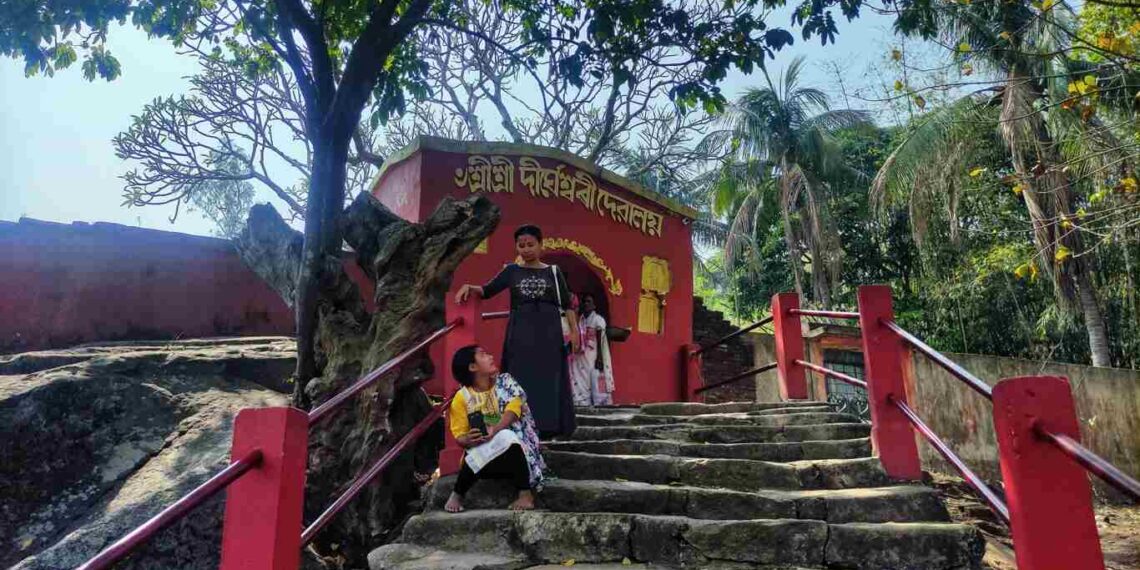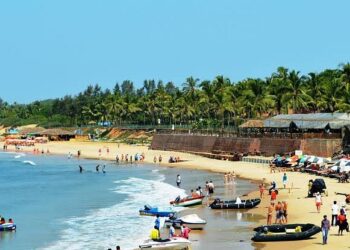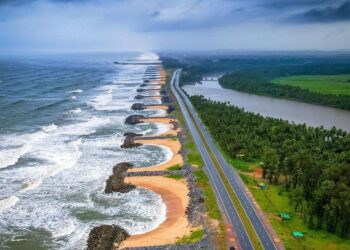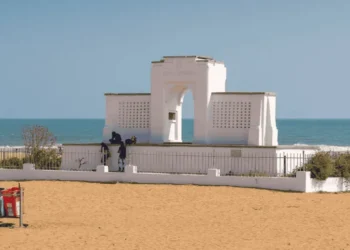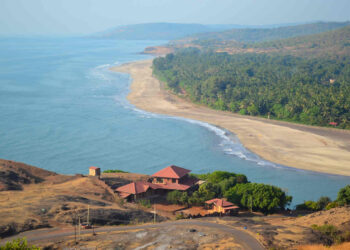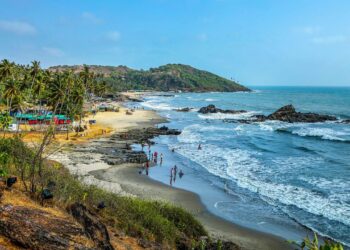Sitting on the top of Dirgheswari Hill, along the northern side of the great Brahmaputra River in North Guwahati, Assam, the Dirgheswari Temple is a popular shrine devoted to Goddess Durga, worshipped here as Dirgheswari. This temple is one of the important Shakti Peethas of Assam, where many devotees come to pray for strength, protection, and inner peace. The present brick structure was built during the Ahom period by King Swargadeo Siva Singha.
History of Dirgheswari Temple
The history of Dirgheswari Temple extends way back in the past rooted in the old Shakti worship traditions of Assam. Though the exact origins of the sacred site are not clearly recorded, the present brick temple was constructed during the reign of Ahom king Swargadeo Siva Singha (1714–1744 CE). The work was supervised by Tarun Duwarah Barphukan, who served as the Ahom viceroy of Guwahati and Lower Assam. The temple stands on a rocky hilltop, and its Garbha-griha (inner sanctum) is set underground inside a small natural cave. An inscription carved on the stone at the back entrance records the royal order for building the temple and also mentions the land grants made for its upkeep.
Later, in 1756 CE, during a royal visit, King Rajeswar Singha offered additional lands and manpower to help manage the temple properly. He also presented a silver Japi (traditional Assamese ceremonial hat), which is still placed over the idol of Goddess Durga during rituals. While it is unclear if any structure existed here in ancient or early medieval times, texts like the Yogini Tantra indicate that Dirgheswari Hill was considered sacred as a Shakti Peetha long before the Ahoms arrived.
Legends of Dirgheswari Temple
People say this hill is one of the Shakti Peethas, where Sati’s left breast fell. According to legend, after Sati’s death, Lord Shiva, overwhelmed with grief, carried her body all over the world. To ease his grief and restore order, Lord Vishnu is said to have used his Sudarshan Chakra to cut Sati’s body into pieces, which fell at different spots, each becoming a Shakti Peetha. It is said that her yoni had fallen on Nilachal Hill, where the well-known Kamakhya Temple still stands today. Her left breast is believed to have dropped at Dirgheswari, which is why the hill is thought to carry a deep and sacred power.
An old story speaks of Sage Markandeya, the immortal rishi, who once came to this hill to worship Goddess Durga. At last the Goddess appeared before him and grants him blessings. Thus Dirgheswari became an important place of worship of Goddess Durga.
Worship and Festivals at Dirgheswari Temple
Worship at Dirgheswari Temple mainly focuses on the reverence of Shakti, the divine feminine power. Every day, the priests from very old families do the temple rituals carefully. First they do abhishekam, giving the deity a bath with milk and water. After that comes archana, when they chant the sacred names with devotion.
One old custom here is the buffalo sacrifice, done once a year during big festivals. Many people come here after visiting Kamakhya Temple, thinking that praying at both places completes the blessings of the goddess and brings good fortune and protection. The temple being in a cave also makes it a quiet place for meditation, attracting wandering ascetics as well as regular devotees who want to sit and reflect.
The temple’s pinnacle is Durga Puja (September/October), a grand nine-day celebration with elaborate idol adornments, cultural performances, and buffalo sacrifices on Ashtami. Huge crowds from different parts of India gather here during this time. Apart from this, the temple also observes Ambubachi Mela in June or July, marking the goddess’s annual menstruation period, much like at Kamakhya Temple. Other festivals such as Kali Puja are also celebrated with devotion.
How to Reach Dirgheswari Temple
By Air: Lokpriya Gopinath Bordoloi International Airport is about 18–30 km away. It has flights to Delhi (around 2 hours) and Kolkata (about 1 hour).
By Train: The nearest stations are Kamakhya Station (closer) and Guwahati Railway Station, about 15–25 km away. Trains from here connect to Delhi (roughly 24 hours) and Dibrugarh (around 8 hours).From either station, autos or taxis take about 20–40 minutes to reach the temple.
By Road: The temple is accessible via NH-27. Buses run from Guwahati city center (12 km away), or you can cross the Brahmaputra by ferry or motorboat from southern bank ghats in 10–15 minutes.
Best Time to Visit: October to March has pleasant weather (15–25°C), ideal for climbing the hill and enjoying river views. Weekdays are quieter, and early mornings (5–7 AM) provide misty, peaceful views. Festivals like Durga Puja can bring crowds exceeding 10,000, so visiting before dawn is best. Temple hours are 5 AM–7 PM.
Nearby Attractions:
Doul Govinda Temple: 4 km away, an old Vishnu shrine with riverfront kundas and detailed carvings.
Aswaklanta Temple: 2–3 km away, a Shiva temple with rock sculptures and legends linked to Sage Markandeya.
Kamakhya Temple: 12 km across the river, Assam’s foremost Shakti Peetha on Nilachal Hill.
Umananda Temple: 10 km south, Shiva’s island shrine on Peacock Island, accessible by boat.
